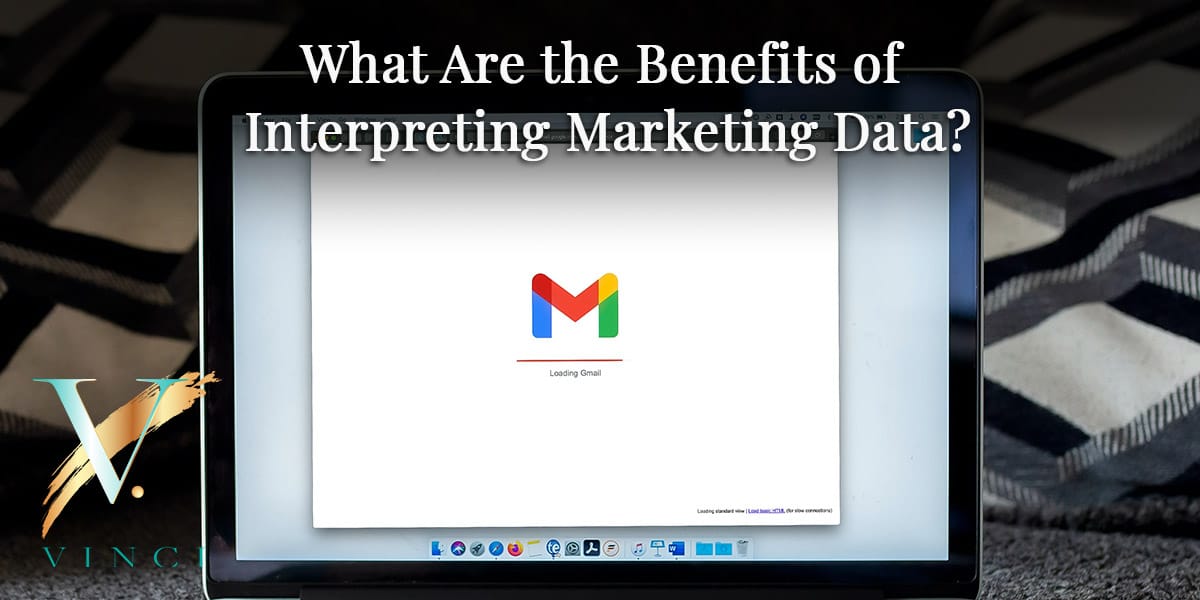The amount of data available to you seems to grow each year. It may feel like useless noise after a while. It is common for business owners to misunderstand data or not know how to put it to use. It is just a bunch of numbers unless you know what to do with them.
Data-driven marketing is a term you might hear but not be sure how it applies to your campaigns. But, if you want to see improvement in your marketing efforts, you need to learn how to put that data to use. So, how can you put your marketing data to work for actionable improvement?
What Is Marketing Data?

Let’s start with some basic definitions. Marketing data is information that a machine reads and can be used to benefit your marketing. Marketing data is how you develop laser-focused campaigns that reach the right people at the right time.
Marketing data helps you better understand your target customer. The more you know about them, the better you can engage with them in a way that leads to conversions.
Marketing data also helps you optimize your process. You can see where your marketing dollars are going to waste and make changes to improve your return.
Marketing Data vs. Marketing Metrics
These are terms sometimes used interchangeably, but they are different.
Marketing data tells you about your customer. What is their buying process? What social media channels do they frequent? It even covers demographics like age and income.
Marketing data can include competitor research, too. What is the other guy doing? How is that working out?
Marketing metrics measure the effectiveness of your campaigns. For instance, how many page views do you get for a product page? If the metrics show an ad on a specific social media channel isn’t getting clicks, you know to make changes somewhere to improve it.
Although marketing data and metrics are somewhat different, you should use them both to create data-driven marketing campaigns.
Customer Data vs. Marketing Data
Customer data is a subset of marketing data that focuses on information about the target buyer. It could include demographics, behaviors, and personal information.
Marketing data is more comprehensive, though. For example, it can include things like keyword and competitor research. It might also cover data about the industry or current market. What are people looking for in a product? What products are selling the most?
What Is Real-Time Data (RTD)?
As the name suggests, real-time data is metrics you analyze as it happens. Real-time data allows you to use technology to get a better outcome from your efforts. Some examples of real-time data include:
- CRM metrics
- Social media analytics
- Website analytics
With real-time data, you can monitor the impact of your marketing as it happens.
What Are the Benefits of Interpreting Marketing Data?

Now that you know what marketing data is, why does it matter? The ultimate goal of analyzing marketing data is to improve sales, but it is more complex. Consider other benefits of understanding marketing data.
Reaching the Customer
The customer is the crux of any marketing effort. You are wasting time and money if you are not reaching the one most likely to buy your product. Interpreting data is the key to engaging with the customer in a way that drives results. Marketing data can tell you:
- What type of marketing works best for your target audience – Do they respond best to videos or emails?
- How to focus your marketing campaigns – Should they be SEO-driven or social media based?
- How to optimize your marketing to get the best results – Do you need to tweak a social media ad to target a different group or location? What are the peak hours for the ad?
Search Engine Optimization (SEO)
Your effort to reach the customer must include getting better organic search results. Analyzing data helps you find the keywords and phrases customers use in searches. With those in place, your brand will rank higher based on its search phrase.
Enhancing Your Marketing Strategy
Marketing data helps you find the best process for your marketing. For example, do you need to do A/B testing on ads to see what pops and what doesn’t? What about events? Does your business need to look for more unique marketing options like tradeshows or local community events?
Analyzing marketing data helps broaden your reach by providing you with personalized marketing solutions.
How Do You Interpret Marketing Data?

The data doesn’t mean much if you don’t know how to interpret it. A practical starting point for analyzing information is to write out your business and marketing goals. This will help you pinpoint the data that matters most to meeting those goals.
Decide what metrics to look at together, too. For example, if you are researching your ideal customer profile, look at the data that focuses on the customers. If you’re looking for ways to engage that customer, you want information about behaviors.
Some of the data that should be important to every brand include:
- Sales revenue – This should be one of the first numbers you check. See how the sales tie back to your last marketing campaign.
- Customer retention – In most industries, the customer that comes back is the one that matters the most.
- Social media engagement – This will tell you if you are focusing on the proper channels or media.
- Cost – This is especially important for online advertising. What is it costing you, and what are you getting from it?
- Website traffic – Are you driving more visitors to your website, and how are they behaving once they are there?
Tips for Utilizing Marketing Data Well

Create a Process To Maximize The Value of the Data
The numbers can be a little overwhelming if you are just entering the world of marketing data so you’ll need a standardized process that helps you make the most of that information.
- Start with identifying your customer – That is your ultimate goal because if you don’t know the customer, you can’t target them.
- Next, determine the critical data points that matter to you – Marketing data offers a lot of information but don’t get bogged down by the numbers. Instead, pick a few that are meaningful for your marketing strategy and focus on them. Also, consider your business when looking at the data. Not all data will be critical to your type of business.
- Not all data is created equally, too, so assess the quality of the numbers – Where did they come from? What technology can help you get the best data in real time?
- Find the missing piece – As you look through the data, is there something more that you think you need? How can you get that information?
- Don’t overlook ROI – What is the return on your marketing investment? If you want to grow your business, you need robust data analysis. Is your current marketing impacting your sales, or do you need to shift gears? Is it worth investing more, like purchasing new software or even hiring a professional to get you back on track? Check the ROI frequently to ensure you are getting a return on your time and money investment.
- Use data to make marketing decisions. You can’t just choose what is easiest or costs the least. You need to look at the data and decide what is working.
- Create focused questions you want to answer using the marketing data. That will help you better understand if you have the information you need to make informed choices.
- Use the data to tell a story about your business. This is another way to focus the data you analyze and determine what is missing. What does the data say about your business? What changes do you need to make to meet your goals?
- Link data points to marketing goals. This helps put the data into context, so you know why it matters. It can also help you identify some larger brand goals that are reachable and what may be a little too aggressive at the current time.
Once you know what the data means, you can find ways to put it to work for your brand.
How to Put Marketing Data to Work for Your Brand

Marketing data doesn’t do you much good unless you can act on it. So consider some actionable ways to use this information.
Use It to Identify Your Ideal Customer
A critical part of developing any marketing strategy is to know who is most likely to buy your product or use your service. In other words, you need to know your customer intimately. Marketing data can help you determine their:
- Job – Are they, stay-at-home parents or business leaders
- Age – Age can be a significant factor for many products. Are teens the likely buyer, or will your product appeal to an older audience?
- Income – If you sell a luxury item, you need to know who can afford it and target that person.
Marketing data can also help you better understand the behaviors of your customer. Are they likely to look for you with a mobile search or go on social media and ask for recommendations?
Use It to Understand Your Brand Better
Marketing data isn’t just about identifying your customer; it also helps you learn more about your brand. What is the current market like? What company is your biggest competitor? Brand awareness can lead to significant changes in the way you market
Use It to Enhance the Customer Experience
Customer service has never been more critical than it is right now. If you fail to make your customers happy, they can tell tens of thousands of people about it.
The customer experience starts with that initial contact and continues throughout your relationship. You must understand your touchpoints with customers and how to make them more appealing and engaging.
A Harvard Business Review survey found that real-time analytics is pivotal in improving the customer experience. You can apply real-time analytics to understand better where a customer is in their journey and how to move them toward a conversion.
Use It to Find New Ways to Reach Customers
Marketing data can tell you have to reach your customers best, too. What social media channels do they use? Do they respond best to videos or live chats? Would they benefit from a brand app?
Marketing data helps you understand the behavior of your customers. With that in mind, you can develop more ways to communicate with them.
Use It For Predictive Analysis
Predictive analysis allows you to look at historical data and use it to identify your customer, understand the market and maybe even plan out the future of your brand. What additional products might do well with your customer base? Are there ways you can cross-sell your products and services?
Predictive analysis can help you create the ideal customer profile by identifying past behaviors and finding patterns. It also provides information on what works for you and what doesn’t.
Use It to Create Omnichannel Marketing Strategies
Consistency is important in marketing, especially since many brands use multiple marketing channels such as social media, blogs, and online ads. Marketing data can help you create an omnichannel strategy that is consistent and effective.
A successful omnichannel approach needs four components:
- It reaches the channels your customers use the most.
- It offers a consistent marketing message and voice.
- It uses personalization to enhance brand loyalty and customer engagement.
- It utilizes metrics to measure the impact across multiple channels.
Marketing data helps you know what channels to use, understand what will engage your customer and how to personalize your message but remain consistent.
If you need help understanding your marketing data, let one of the experts at Vinci Digital get you started. Contact us today to set up a consultation.











